Recent Posts
Winter Safety: How to Prevent House Fires When Temperatures Drop | SERVPRO of Stillwater, Oakdale, Mahtomedi
10/17/2024 (Permalink)
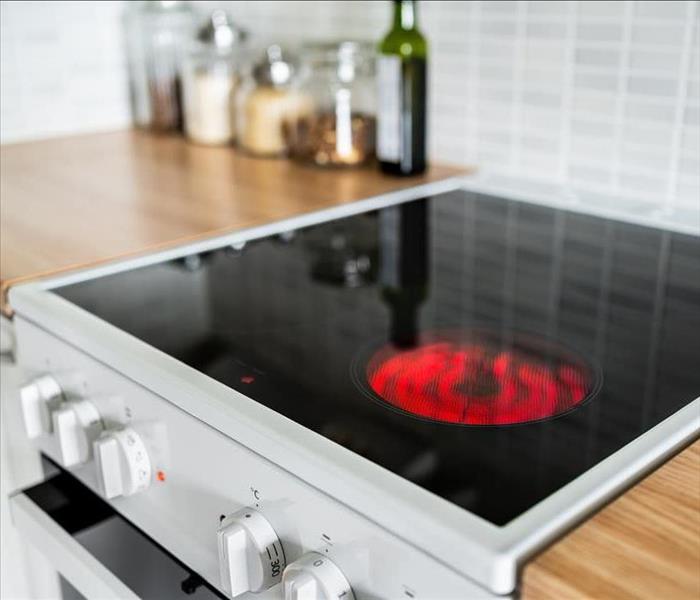 Stay warm and fire-safe this winter! Maintain heating equipment, practice safe cooking, and have an emergency plan. Call us for fire restoration help!
Stay warm and fire-safe this winter! Maintain heating equipment, practice safe cooking, and have an emergency plan. Call us for fire restoration help!
As temperatures plummet and winter settles in, many homeowners begin to rely on heating sources that can pose fire risks. At SERVPRO of Stillwater, Oakdale, Mahtomedi, we understand the importance of keeping your home safe during the cold months.
By taking proactive measures, you can reduce the chances of a house fire and ensure your family stays warm and secure. Here are some essential tips to help prevent fires as the temperatures drop.
Maintain Your Heating Equipment
Regular maintenance of heating equipment is crucial for fire prevention during the winter. Whether you use a furnace, space heater, or fireplace, ensuring that these systems are in good working order can significantly reduce fire risks. For furnaces, schedule an annual inspection by a qualified technician to check for any potential issues. Replace filters regularly to improve efficiency and reduce the chance of overheating.
When using space heaters, always place them at least three feet away from flammable materials such as curtains, blankets, and furniture. Never leave space heaters unattended or use them while sleeping. Fireplaces also require careful attention; ensure your chimney is cleaned and inspected yearly to prevent creosote buildup, which can ignite and cause a dangerous fire. By maintaining your heating equipment, you not only ensure your home stays warm but also reduce the risk of a fire occurring.
Practice Safe Cooking Habits
Cooking is one of the leading causes of house fires, especially during the winter when families often gather to prepare meals. To prevent cooking-related fires, always stay in the kitchen while cooking, especially when using oil or high heat. If you need to leave the kitchen, turn off the stove or ask someone to watch it for you.
Keep flammable items such as oven mitts, dish towels, and food packaging away from the stove and countertops. When using the oven, ensure it is clean and free from any leftover food debris that could catch fire. Additionally, consider using timers for your cooking to help remind you when it’s time to check on your meals. By practicing safe cooking habits, you can enjoy delicious winter meals while minimizing the risk of fire.
Create an Emergency Plan
While prevention is key, it’s also essential to be prepared for the unexpected. Creating an emergency plan can help ensure that your family knows what to do in the event of a fire. Begin by mapping out escape routes from each room in your home. Make sure that all family members are aware of these routes and practice your escape plan regularly.
Install smoke detectors on every level of your home, especially near sleeping areas, and test them monthly to ensure they are functioning properly. Replace the batteries at least once a year. Additionally, consider investing in a fire extinguisher for your kitchen and other high-risk areas. Educate your family on how to use it effectively. Having a well-thought-out emergency plan in place can make all the difference in ensuring your family's safety during a fire.
As winter approaches, take the necessary steps to protect your home from fire hazards. By maintaining your heating equipment, practicing safe cooking habits, and creating an emergency plan, you can significantly reduce the risk of a house fire.
At SERVPRO of Stillwater, Oakdale, Mahtomedi, we care about your safety and are Here to Help® if the unexpected occurs. Should you need assistance with fire damage restoration, don’t hesitate to contact us for expert help. Stay safe this winter!
How Gutters Keep Your Basement Dry
4/12/2024 (Permalink)
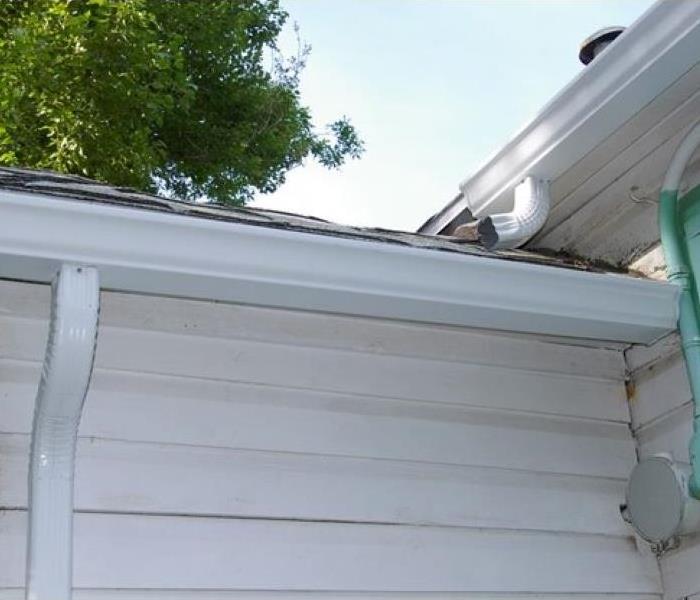 Protect your basement from water intrusion. Install quality gutters and keep them clean!
Protect your basement from water intrusion. Install quality gutters and keep them clean!
Basements are often an important space of a home, providing valuable storage space or even extra living areas. However, they're also vulnerable to water damage, which can lead to costly repairs. One crucial line of defense against basement flooding is often overlooked: gutters.
Gutters play a pivotal role in keeping your basement dry by managing rainwater runoff effectively. When rain falls on your roof, gutters collect the water and direct it away from your home's foundation. Without gutters, rainwater can pool around the base of your house, seeping into the soil and eventually finding its way into your basement through cracks or porous materials.
Moreover, gutters also play a crucial role in preventing mold and mildew growth in your basement. Excess moisture can create an ideal environment for mold and mildew to thrive. By effectively managing rainwater, gutters help maintain optimal moisture levels around your home's foundation, reducing the risk of mold and mildew formation in your basement.
Investing in quality gutters can go a long way in safeguarding your basement and protecting your home from the detrimental effects of water infiltration. However, should your basement end up wet, call SERVPRO of Stillwater, Oakdale, and Mahtomedi to handle your mitigation needs.
Vacation to-do list: Be sure to add this!
3/6/2024 (Permalink)
 Ocean water: The only water you want to dip your toes in!
Ocean water: The only water you want to dip your toes in!
Embarking on a vacation brings excitement and relaxation, but amidst the anticipation, a crucial detail often slips through the cracks—turning off the water supply. This simple act can be the difference between returning to a serene home or a watery disaster. Water damage, even from a small leak, can wreak havoc in your absence, causing structural issues, mold growth, and substantial financial setbacks.
Turning off your water before vacation serves as a preventive measure, safeguarding your property and belongings. It minimizes the risk of leaks, burst pipes, and other plumbing mishaps that could go unnoticed for days or even weeks.
However, accidents may still happen, and that's where SERVPRO® comes to the rescue. Their expertise in water damage restoration ensures a swift and efficient response to mitigate the aftermath. With advanced technology and a team of skilled professionals, SERVPRO® can salvage and restore your home, preventing long-term consequences.
In the symphony of vacation preparations, let the chorus of water-consciousness be your guide. A few minutes to turn off the water and the assurance of SERVPRO expertise can transform your vacation from worry to wonder. Protect your home and return to the peace you left behind.
Is Minnesota At-Risk for Fires This Spring?
3/6/2024 (Permalink)
In a surprising turn of events, Minnesota is facing snowless winters, raising concerns about heightened fire danger in the region. The absence of the protective snow layer leaves the landscape vulnerable, increasing the risk of wildfires in both urban and natural areas. Dry conditions, combined with gusty winds and low humidity, create the perfect conditions for wildfires to spread rapidly. Grasslands, forests, and even urban areas become vulnerable, posing a threat to both property and lives.
Amidst these challenges, SERVPRO® emerges as a valuable ally to the people of Stillwater, Mahtomedi, and Oakdale. With expertise in fire damage restoration, SERVPRO can assist residents and business owners in preparing for the worst. Their services include developing Emergency Ready Plans for businesses, educating business owners and homeowners, and offering timely responses to fire-related incidents.
The absence of snow in Minnesota is not merely a matter of aesthetics but a concerning trend with far-reaching consequences. The increased fire danger poses a significant threat to both the environment and public safety. Fortunately, in the event of a fire, SERVPRO stands ready to assist in any way possible.
St. Croix River Flooding
4/14/2023 (Permalink)
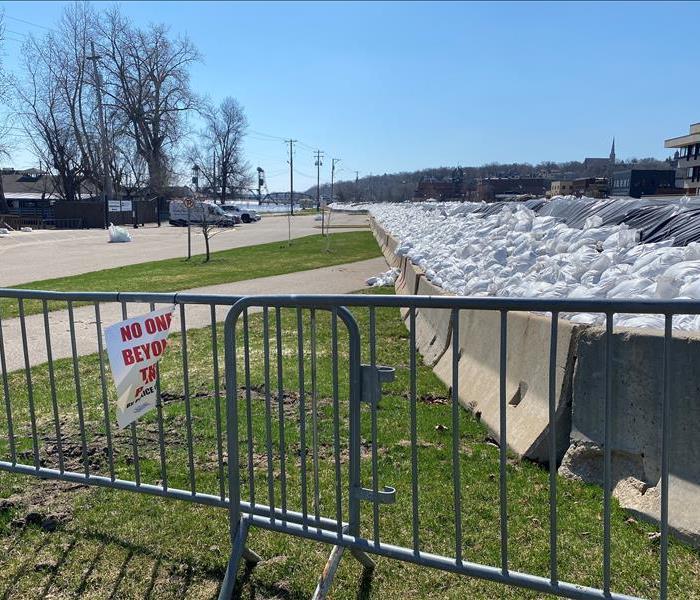 Sandbags in Stillwater, MN
Sandbags in Stillwater, MN
Spring has finally arrived in Minnesota! The sunshine and warm temperatures are such a blessing and bring so much joy. Of course, every season has its good and bad.
The good news is that the snow has melted here in Stillwater, Minnesota. It was a relatively calm spring. We did not receive an influx of calls from people with wet basements caused by the snow melt.
There is still worry about river flooding however. The snow up north is still melting and headed our way. Major flooding is still forecasted for the St. Croix River. According to The National Weather Service the river is expected to rise above flood stage Saturday evening, April 15, 2023 and continue rising to a crest of 89 feet Tuesday morning. Flood stage is at 87 feet. At 89 feet, the city park in Bayport, Minnesota begins flooding.
While the warm temperatures this week may feel like summer, please remember that rivers are very dangerous this time of year. If you live along the St. Croix River, take precaution to protect your property.
- Move contents out of the basement/ground level floor if possible
- Elevate major appliances onto concrete blocks
- Clean drainage ditches or storm drains
- Use a flood barrier (sandbags, portable flood gates, inflatable flood walls, etc.)
- Make sure your sump pump is working properly
- Turn off electricity at the breaker panel
If floodwater does enter your home, remember that it is contaminated water. Take precautions to protect yourself and your family. If you need help with flood cleanup, give SERVPRO of Stillwater, Oakdale, Mahtomedi a call, 651-705-7028.
Equipment & Safety Precautions Used in Water Removal
12/12/2022 (Permalink)
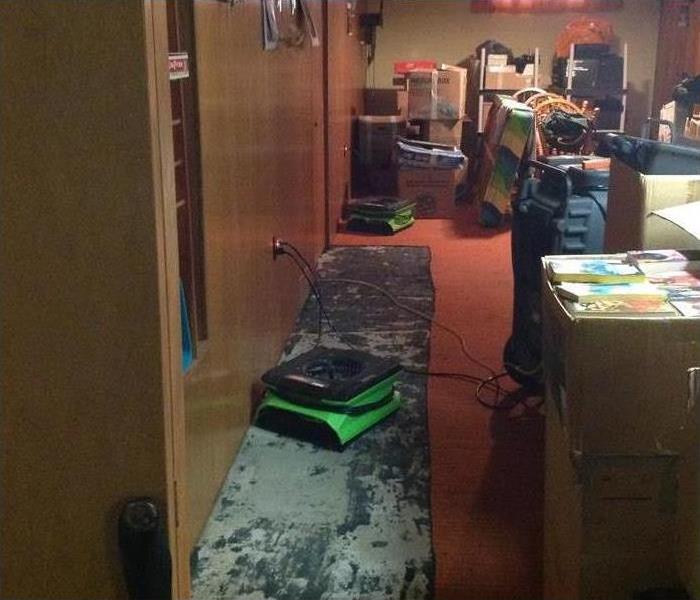 Floor drying basement floor
Floor drying basement floor
Water Restoration Process
Water removal is often considered the most important step in any water restoration process. It involves removing excess water to prevent mold growth and serious structural damage. Water removal should be done by highly trained professionals with the right equipment, experience and knowledge of the industry.
Water removal is the most important step.
Water removal is often considered the most important step in any water restoration process. It is the only way to ensure that all moisture has been removed and that mold, mildew and bacteria will not be able to grow. The best way to accomplish this task is by using specialized equipment such as:
- Water extraction tools (wet vacuums)
- Air movers (squeegees, fans)
These tools work together with dryers and dehumidifiers to remove all residual moisture from a building’s structure. These devices require expertise; therefore, it’s important for contractors who are experienced in water damage restoration services to handle these projects properly.
Equipment required for large floods and small pills.
Water removal equipment is available in a variety of sizes and shapes, from small vacuum extractors to large pumps. If you're using your own pump, be sure it has a high enough PSI rating so that it can handle the amount of water in your Oakdale, MN home or business.
If there is a large flood situation, then renting or purchasing a larger pump may be necessary. The size of the flood will dictate what kind of equipment will work best for removing it quickly and efficiently; however, paying the price to purchase or rent equipment might be more expensive than having a contractor remove the water for you.
A dehumidifier will help reduce humidity levels in your house.
A dehumidifier is a machine that removes moisture from the air. Dehumidifiers can help reduce humidity levels in your home and protect against mold growth and damage to building materials.
How Can SERVPRO of Stillwater, Oakdale, Mahtomedi help?
If you want to get back in your home as soon as possible and start the process of rebuilding, SERVPRO of Stillwater, Oakdale, Mahtomedi can help. Our technicians will work with you and your insurance company to help determine the right course of action for cleaning up and restoring your property. We also work closely with other experts in the field such as mold remediation contractors, structural engineers, and drying companies when needed.
Conclusion
Water damage can cause secondary damage if not attended quickly. We at SERVPRO of Stillwater, Oakdale, Mahtomedi understand that you have a lot on your hands and it’s hard enough to deal with the damage caused by water without having to worry about finding someone to help you with the cleanup process. That is why we are here for you 24 hours a day, 7 days a week when water damage strikes in your home or business. Our cleanup crews are fully trained in all aspects of water removal, so they know exactly what steps need to be taken before starting any type of cleanup project.
To learn more about our water damage restoration services, contact us today!
How Do You Fix a Leaky Faucet?
11/8/2022 (Permalink)
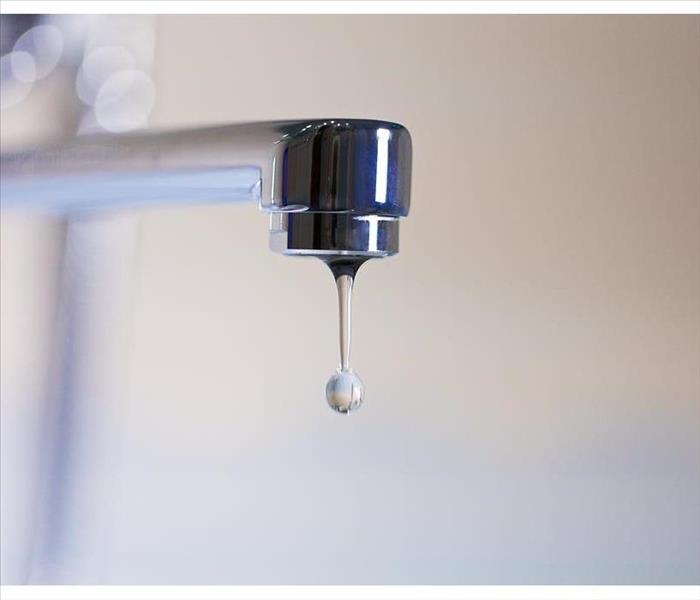 Fixing a leaking faucet is no big deal
Fixing a leaking faucet is no big deal
How Can a Leaky Faucet Be Fixed?
You’re sitting in the kitchen, enjoying a nice cup of coffee or tea, when you hear the unmistakable sound of water dripping. You turn around and see drips coming out of your faucet—ugh! You can’t do anything but sigh; it's going to be one of those days. Don't worry – with a few helpful tips, fixing a leaky faucet doesn't have to be difficult at all. Here's how.
Stop the Drip
If you are dealing with a dripping faucet, first turn the water off at the source. Then, unscrew and remove the cap from under your sink to expose the plumbing underneath. Next, remove the plastic cap that covers up where water flows through your faucet body.
Turn Off the Water
Before you begin working on the faucet, turn off the water supply valve near your water meter. This will prevent you from accidentally turning on a running faucet while working nearby and getting soaked in cold water. If you don’t know where this valve is located, ask someone who does or call a plumber for assistance.
If for some reason you are unsure how to turn off the water supply valve yourself, have no fear! It's easy enough that anyone can do it with minimal knowledge and practice.
Unscrew the Cap
If you’re going to fix your leaky faucet, use a wrench. Don’t try to unscrew the cap with your hands! You won’t be able to get a good grip and could end up dropping it into the sink or breaking it.
Make sure that you have some sort of cloth or sponge at hand (not your hands) so that if any water starts leaking out during your repair job, it doesn't get all over everything else in sight.
Remove the Plastic Cap
To remove the plastic cap, use a screwdriver to pry it off. The cap will be located under the handle of your faucet. If you're having trouble finding it, look for a small hole in the faucet body where there's likely a screw holding it in place—this should be easy enough to spot with an X-Acto knife or needle-nose pliers if you don't have any tools on hand.
Take Off the Handle Screw
1. Take the handle screw off with your screwdriver.
2. Pull off the entire handle, including all pieces attached to it (the metal part that connects to the faucet body, as well as springs and other components).
3. Replace your old handle with a new one by following instructions on its packaging.
Take Off the Handle and Remove the O-ring
To fix a leaky faucet, you'll need a screwdriver and an O-ring. First, take off the handle with your screwdriver by carefully unscrewing it from the stem. Then remove the O-ring from inside of it and replace it if necessary: if it's worn out or cracked, replace it before putting everything back together again. Make sure that you put everything back together correctly—the stem should be lined up with its notch on top when reinserted into its hole in the basin.
Take Out the Stem and Replace It
If the stem is still in place, take it out. You'll need to do this by removing the screw that holds it in place and twisting the stem off. Once you've removed the old stem, replace it with a new one by pushing it through from above and tightening its screw into place.
Clean Up Any Debris and Corrosion
You'll want to clean up any debris and corrosion. This can be done with a toothbrush, pipe cleaner, toothpick, or cotton swab.
For the threads: You'll use your brush or pipe cleaner to clean out all the debris from within them. If there is any corrosion on the inside of these threads, you should use some non-flammable mineral spirits (available at hardware stores) to remove it before reinstalling your faucet.
For the stem: Use your pipe cleaner and a small brush to wipe away any dirt or grime that may have accumulated in there over time.
In the end, fixing a leaking faucet is no big deal. It’s not something that should keep you up at night unless your apartment is on fire or something. You can save yourself some time and money by doing it yourself instead of calling in a plumber every time there’s something wrong with your plumbing. Just follow these steps carefully and you should be good to go!
What To Do After a Fire
10/15/2022 (Permalink)
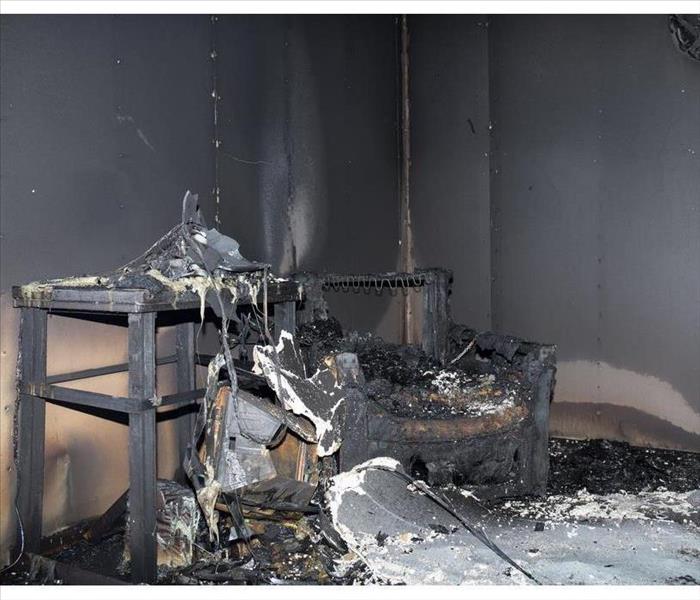 The aftermath of a fire.
The aftermath of a fire.
How to Respond to a Fire
It can be hard to know what to do after a fire. The damage is extensive, and you may not even know if your insurance will cover it. Here are some tips that can help you get past the initial shock of a house fire and start planning.
Get your insurance information.
After you have evacuated your home and have been given the “all clear” from your fire department that it is safe to return, you will want to contact your insurance provider.
Once you are connected with an agent, it is important that you provide them with a full list of the damage. For this reason, it is important to keep a running list of your belongings and any assets that may be affected in a disaster. This will help the insurance agent construct and accurate claim.
When the fire is out, you should contact your insurance carrier. You'll need to report the event and get an adjuster to come out as soon as possible. This can be done by phone or in person at your local branch office. Do not clean up anything on your own until the adjuster has looked at it; otherwise, any damage that may have occurred during cleanup could affect your claim.
Contact a fire damage restoration service.
If your house has been affected by fire or smoke damage, you will want to contact a fire damage restoration service. These companies help homeowners deal with the aftermath of fires in their homes. They can board up the house, clean it, and repair it, as well as help with insurance claims. The company may also be able to help find temporary or permanent housing for you and your family while repairs are being made on your home.
Document the damage.
One of the most important steps in your insurance claim is to document the damage. This will help you get a more accurate estimate and more money in your pocket.
Here's how:
- Take photos of the damage. Make sure you take pictures of what happened before, during, and after the fire so that you can clearly show how much work was done by firefighters or contractors hired on your behalf.
- Take detailed notes of what happened during and after the fire (dates, times, conversations with anyone from your insurance company). You may need this information when talking with an adjuster or at trial if it comes down to litigation for damages caused by negligence on someone else's part (i.e., someone not paying attention around an open flame).
- Measure everything—from flooring materials removed for cleaning purposes all way up through any smoke damage that has occurred on walls and ceilings above where firefighters were working at extinguishing flames below them.
Clean up any mess.
- After a fire, you will need to remove any debris and clean up the mess.
- Clean up any wet or dry materials on the floor.
- Remove smoke smell from walls, ceilings, and furniture by washing them with soap and water (if possible).
- Clean curtains, clothes, and furniture with mild detergent in warm water.
- Use an industrial vacuum to suck up excess soot from carpets before washing them. Get rid of any large dust particles from air ducts with a brush attachment on your vacuum cleaner hose or use a stiff broom to sweep it out through windows if necessary (make sure all windows are open for ventilation).
It is hard to know what to do after a fire, but here's some advice on how to start the process of recovery.
- Get the insurance company involved.
- Clean up the mess as much as possible.
- Document the damage with pictures or a video camera. If you can take pictures or video of your home before and after, that can be very helpful for both your own records and for your insurance claim.
- Contact a fire damage restoration service if you need help cleaning up after a fire in your home.
The aftermath of a fire can be overwhelming, but there are many things that you can do to help the recovery process. Keep in mind that it may take some time before your home is back to normal, and that’s okay! Be patient with yourself, and if there are any bugs or issues along the way, ask for help from friends and family members who will be happy to lend their assistance.
3 Reasons To Invest in Business Insurance
9/4/2022 (Permalink)
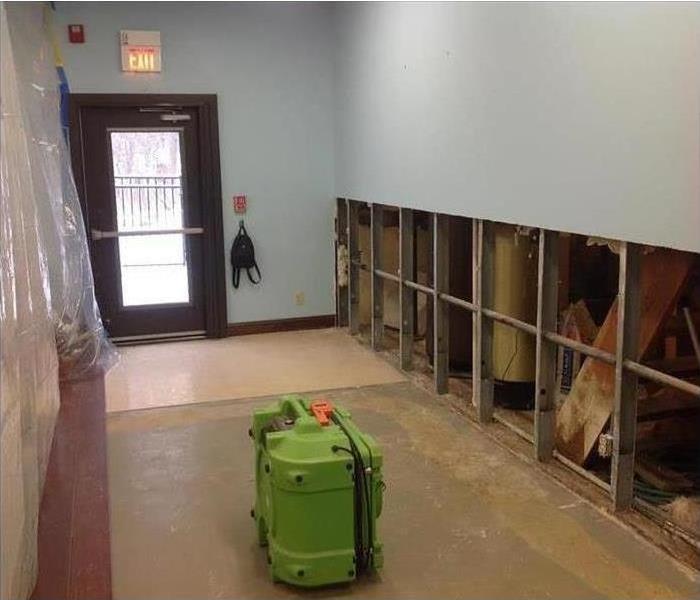 Water damage can come from just about anywhere.
Water damage can come from just about anywhere.
Business Insurance
If your commercial property in Mahtomedi, MN, has suffered water damage, contact insurance immediately seeking aid. Most insurance policies cover some water intrusion, such as busted pipes. Your agent can collaborate with a water restoration company to ensure that the building receives appropriate cleanup and provide financial help.
1. Minimize Your Out-of-Pocket Costs
Repair bills for broken pipes can be quite large. The lines themselves must be mended; then, the property must be dried, cleaned and restored. This process is timely and could require revamping much of the space, costing well within the thousands. Many owners do not have that money saved, and a bank loan means facing undesirable interest. With an insurance policy, owners pay a deducible. The agency handles the rest of the funds, at least up to the coverage amount.
2. Receive Thorough Professional Restoration Services
The insurer may not love writing over a large check, but the agency certainly needs to protect the asset and avoid future claims. Before financial assistance is granted, the agency insists on their adjuster seeing the building, determining what should be done. They also monitor the completion request to ensure that everything you need is covered. It's an extra set of eyes to safeguard you and your establishment.
3. Cover Property Loss and Damage
During a water cleanup, the crew may extract drywall and carpeting since there are difficult to sanitize thoroughly. Also, the team looks over any other drenched valuables, considering whether they are salvageable or not. While their content cleaning employees may be able to treat electronics and important documents, much of the saturated items are likely tossed. Insurance policies cover the restoration of the structure and the replacement of lost belongings, saving you the hassle of paying for them yourself.
Water damage remediation adds up quickly. Having an insurance policy is an owner's lifeline, offering the reassurance that the premises receive proper care at an affordable rate. The monthly investment pays off when calamity strikes.
What To Do if There Is a Gas Leak in Your Home
8/31/2022 (Permalink)
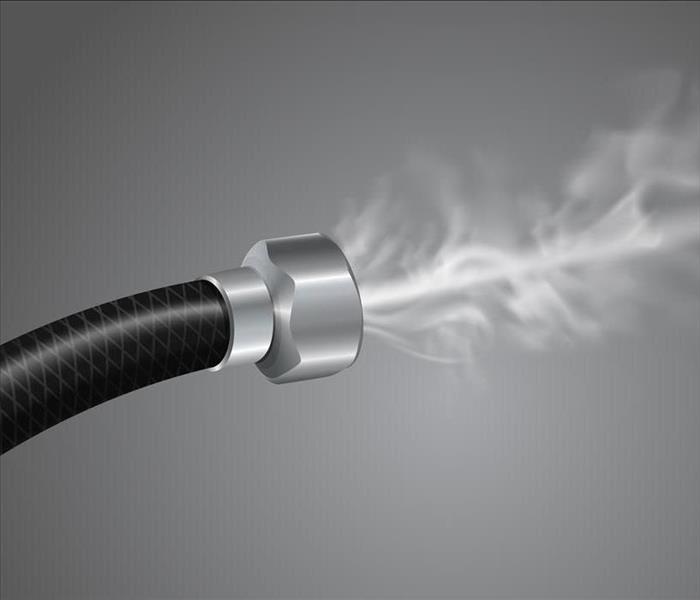 In the event of a gas leak, it's important to know where your gas meter is located.
In the event of a gas leak, it's important to know where your gas meter is located.
What to Do if Your Home Has a Gas Leak
Smelling gas within your home can be disastrous if you don't know how to react. Here are five tips to help minimize the risk of a gas fire sparking in your Bayport, MN, home.
1. Check the Stove
For homes with a gas-burning stove, this is often the culprit of a gas scent wafting. If you are not actively cooking but smell gas, check the stove to make sure a burner wasn't left on. Always be mindful of shutting the stove off after cooking, as combustion is always possible and creates destruction only fire damage restoration professionals can repair.
2. Keep Lights Off
Do not turn on any lights in the home if you suspect a gas leak. They could cause a spark that could lead to a gas explosion in severe cases. If you need light, use a flashlight instead.
3. Open Doors and Windows in the House
Proper airflow and ventilation are important in reducing the risk of a gas fire. Therefore, if you smell gas, create more circulation for it to flow rather than be contained in one space. Opening up the doors and windows of your home promotes gas movement rather than collection.
4. Shutoff Gas Meter
In the event of a gas leak, it's important to know where your gas meter is located and how to shut it off. This will stop the flow of gas and can prove critical for keeping you and your family safe from harm.
5. Evacuate Home Upon Smelling Natural Gas
The best way to ensure safety from a potential gas fire is to evacuate your home if gas odors are present. Make sure everyone in the household is accounted for and gather a safe distance away from the house in case an explosion occurs.
If you smell gas within your home, act accordingly. Check your stovetop, keep lights off, open windows, turn off the gas meter and evacuate for your safety.
 Stay warm and fire-safe this winter! Maintain heating equipment, practice safe cooking, and have an emergency plan. Call us for fire restoration help!
Stay warm and fire-safe this winter! Maintain heating equipment, practice safe cooking, and have an emergency plan. Call us for fire restoration help!






 24/7 Emergency Service
24/7 Emergency Service







